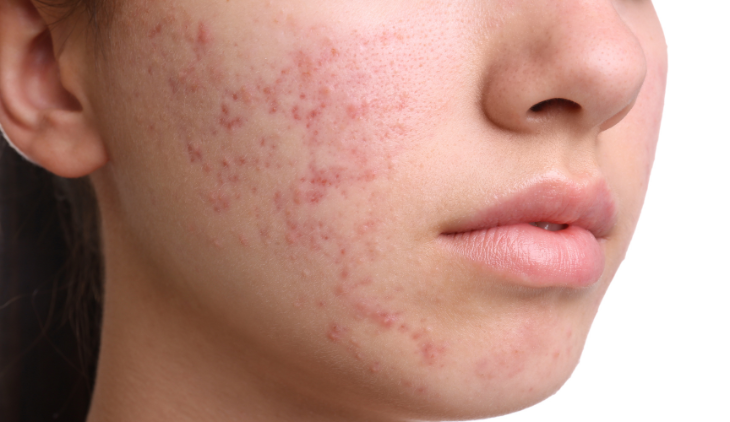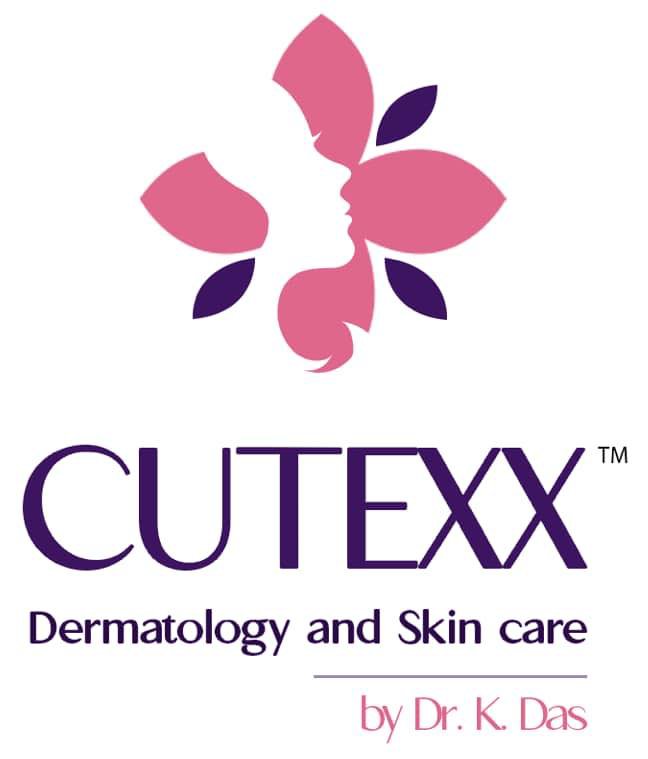
ACNE SCARS

ACNE SCARRING
When the acne lesion swells and breaks the skin’s surface, the body attempts to repair the damage by forming new collagen fibers. However, this repair process is often not smooth and can lead to different types of scars.
CAUSES
Severe nodular and cystic acne, along with picking at acne, can lead to the formation of acne scars.
Each acne lesion possesses the inherent capacity to undergo healing. When a pimple occurs, it can either lead to tissue loss, resulting in milder scars, or trigger the formation of new, thicker tissue, potentially leading to more severe scars.
TYPES OF ACNE SCARS
Ice-pick Scars: The skin appears to have been pierced by a needle.
Rolling Scars: This type causes rolling or “wave-like” undulations across otherwise normal-appearing skin.
Boxcar Scars: They are round or oval depressions wider than ice-pick scars.
Hypertrophic Scars : They appear as firm, raised masses of tissue and are usually larger than the original acne in size.
TREATMENTS FOR ACNE SCARS
Specific treatment procedures to minimize acne scars will be determined by your dermatologist based on –
- Your age, overall health, and medical history
- Severity of the scar
- Type of scar
- Your tolerance for specific medications, procedures, or therapies
- Your opinion or preference
- Creams and Lotions– Various creams or lotions containing retinol, vitamin C and alpha and beta hydroxy acids help in resurfacing of the scars. They are more effective in superficial scarring. These topical creams are often used as a combination with various other procedures done for scarring.
- Chemical Peels – They are also effective in treating acne scars. They result in a smooth, even surface along with improving the texture of the skin.
- Skin polishing (Microdermabrasion)– It is a procedure that removes the superficial layer of skin helping in resurfacing of the scars, but only for superficial ones. It uses a gentle vacuum along with crystals and gently removes the top layer of dead skin. This also stimulates collagen production and helps heal the scars. As the skin heals from the procedure, the surface appears smoother and fresher.
- Mesotherapy – It is a non-surgical, relatively painless procedure wherein multiple microinjections deliver vitamins, amino acids, hyaluronic acid etc. into the skin stimulating collagen production and help in scar resurfacing. Significant improvement in the scar surface has been noticed with this procedure.
- Derma Roller– A medical micro-needling procedure that releases new collagen and elastin in the scar tissue. Thus effective in scar filling as well as rejuvenation. Mostly useful in indented or rolling scars.
- Filler injections – collagen is injected beneath the skin to replace the body’s natural collagen that has been lost. It is mostly useful for depressed scars like boxcars or rolling scars. Procedure can last for up to 8 – 12 months. When done in combination with other treatments, the results can be good.
- Scar Filling – Deepscars which are formed while acne is in resolving phase leads to puckering of skin and scar formation. In Scar filling with the help of needle these bands are broken painlessly and the tension over the skin is released, helping in filling of the scar and treatment of scars. More like a sandwich treatment for scars. Up to 90% scar filling can be achieved with this method painless and extremely effective.
WHY CUTEXX SKIN CLINIC FOR ACNE TREATMENT?
We, at Cutexx Skin Clinic, after assessing disease severity and type of scarring, plan an individualised treatment to get the acne controlled along with decreasing the scars so as to achieve the best cosmetic result as possible.
Consult Now
Dr. Kinnor Das, MBBS, MD, is a specialist in Dermatology, Venereology, and Leprosy. With extensive training and experience in these areas, Dr. Das is dedicated to providing exceptional care to his patients.

